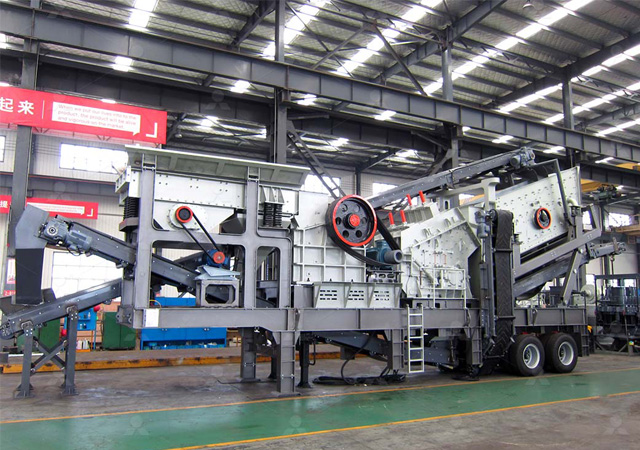A mobile crusher is a versatile and efficient piece of equipment used in the construction, mining, and aggregate industries. It is designed to be easily transported and can operate in various locations, providing flexibility and convenience for crushing operations. The components of a mobile crusher are carefully engineered to work together to provide efficient material processing. Here’s an overview of the key components of a mobile crusher:

1. Chassis:
- Frame: The chassis serves as the foundation of the mobile crusher. It is a robust structure made of high-strength steel that supports all other components of the crusher. The chassis ensures stability and durability during transportation and operation. It typically features multiple axles and wheels for mobility, making it easy to transport from one site to another.
- Crawler or Wheels: Depending on the model, mobile crushers can have either crawler tracks or wheels. Crawler tracks provide superior off-road mobility and are ideal for rugged terrains, while wheel-mounted crushers are more suitable for road transport and smoother surfaces. Both types offer excellent mobility and quick setup times at various job sites.
2. Crusher Unit:
- Jaw Crusher: This is one of the most common types of crushers used in mobile crushers. It consists of a fixed jaw and a moving jaw, which crush material by compressing it between the two jaws. It’s designed for primary crushing, capable of handling large rocks and breaking them into smaller sizes suitable for secondary crushers or screening systems.
- Impact Crusher: An impact crusher employs impact force to crush materials. It consists of a rotating horizontal shaft with hammers or blow bars that strike and break down the material. This type of crusher is highly effective for processing materials with high abrasiveness, such as granite, limestone, and concrete.
- Cone Crusher: A cone crusher operates using a rotating cone within a chamber to crush material. It’s effective for secondary, tertiary, and quaternary crushing stages. Cone crushers are typically used for hard, abrasive materials and offer a high reduction ratio.
- Screening Unit: The screening unit consists of vibrating screens that separate the crushed material into different sizes. It can be mounted in-line with the crusher or as a standalone unit. The screens can be adjusted to meet the desired size specifications of the crushed material. This component is essential for separating the finished product from any oversized material, allowing for further processing if necessary.
- Feeding Unit: The feeding unit, typically a vibrating feeder, ensures a steady and controlled feed of material into the crusher. It minimizes blockages and maintains an even flow of material, improving efficiency and reducing wear on the crusher components.
- Conveyors: Mobile crushers are equipped with conveyors to transport the crushed material from the crusher to the next processing stage or directly to stockpiles. These conveyors can be fixed or extendable, allowing flexibility in material handling and stockpiling.
3. Power Unit
- Engine and Hydraulic System: The engine provides the necessary power to drive the various components of the mobile crusher, including the crusher unit, conveyors, and vibrating screens. Depending on the model, mobile crushers may use diesel engines or electric motors. Hydraulic systems are commonly used to power movement and adjustments of certain components like the feeder, conveyor belts, and jaw crushers.
- Control System: A control system manages the operation of the crusher. It adjusts parameters such as feed rate, screen inclination, and crusher speed to optimize performance and ensure that the crusher operates efficiently. Modern mobile crushers often use digital control systems to monitor and manage the crusher’s performance.
4. Control System:
- Control Panel: The control panel serves as the operator interface, allowing for easy monitoring and control of the crusher’s functions. It includes buttons, switches, and displays that show important parameters such as temperature, pressure, load, and system status. Modern mobile crushers may feature automated control systems that improve efficiency and reduce downtime.
5. Safety Features:
- Emergency Stop Button: Mobile crushers come with emergency stop buttons to quickly shut down the crusher in case of an unexpected event or malfunction. Safety screens and guards are also installed around moving parts to prevent accidents and injuries.
6. Maintenance Features:
- Access Platforms: Access platforms and ladders are provided for safe and easy maintenance of the crusher’s components. This ensures that operators and maintenance personnel can perform routine checks, lubrication, and component replacement without compromising safety.
Mobile crushers are complex machines that combine various components to offer flexibility and efficiency in material processing. Each part is designed to work in harmony with the others, ensuring smooth operation, high productivity, and low maintenance. The integration of advanced control systems, mobility options, and safety features make mobile crushers an essential tool in the modern mining and construction industry.

